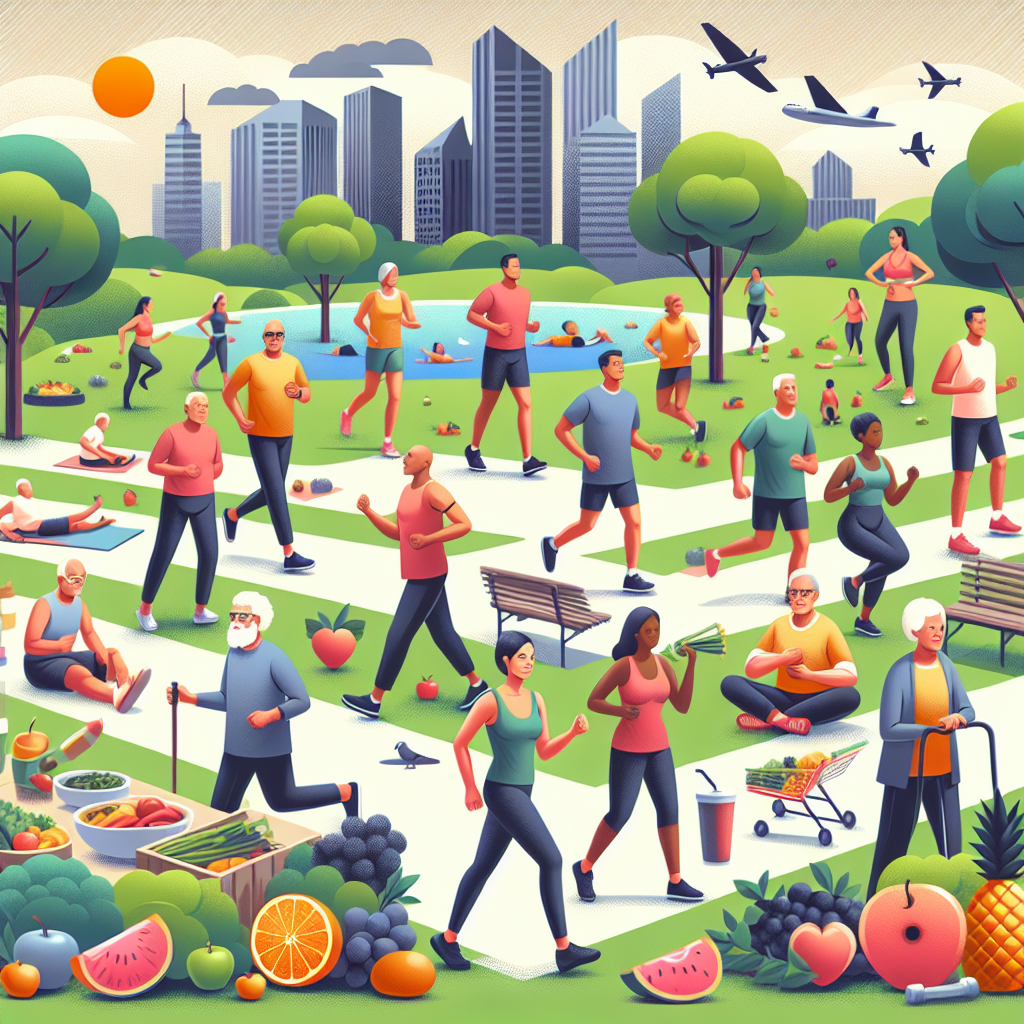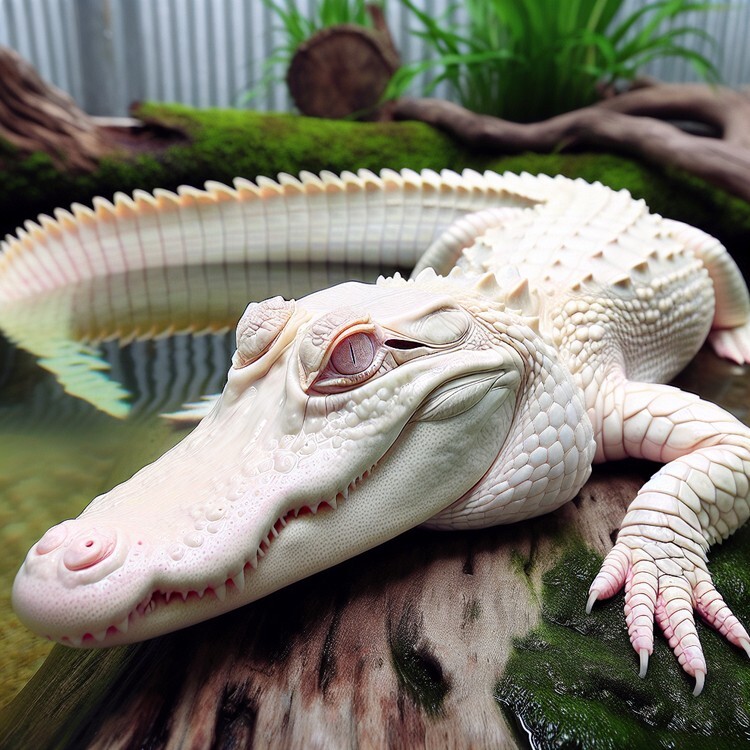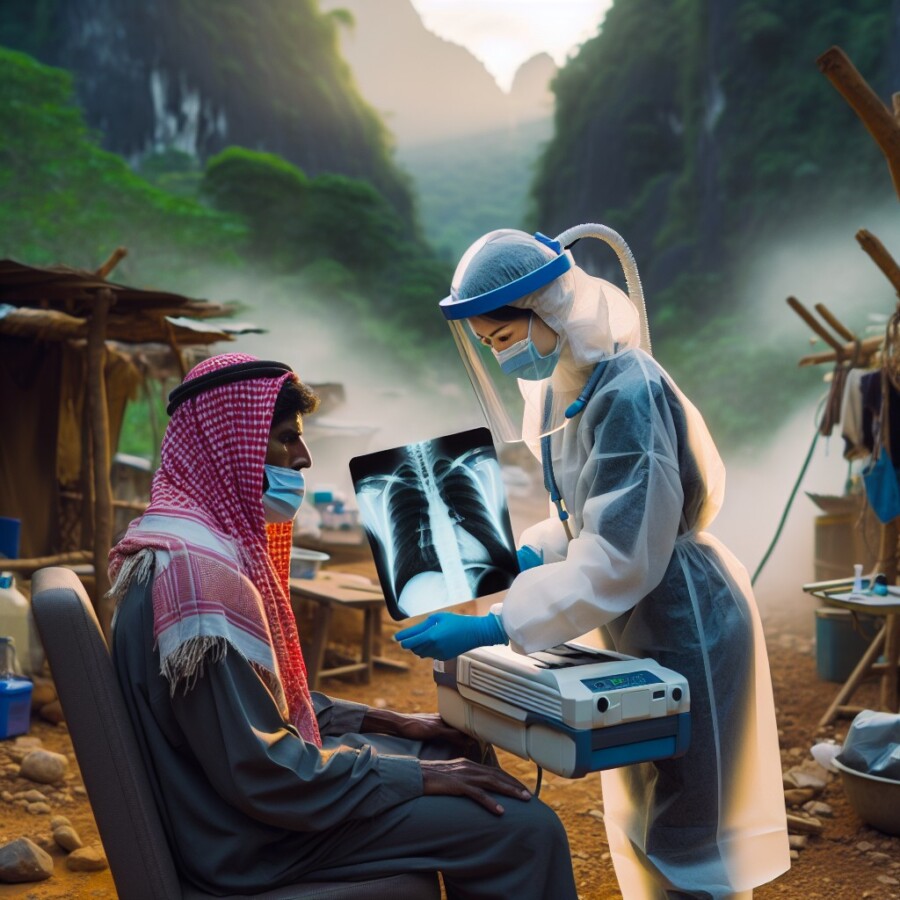Scientists saw chimpanzees in Uganda eating special plants. These plants help them feel better when they are hurt or sick. The scientists watched the chimpanzees and took samples of the plants they ate. They found out that most of these plants can fight bacteria. This might help humans find new medicines.
Dr. Elodie Freymann and her team studied the chimpanzees for four years. They watched two groups of chimpanzees and collected their droppings and urine. They paid close attention when a sick chimpanzee ate something different. They tested 17 samples from 13 plants and found many could stop bacteria. Dr. Freymann said we need to save these forests to find more helpful plants.
Original news source: Chimpanzees ‘self-medicate’ with healing plants (BBC)
🎧 Listen:
Slow
Normal
Fast
📖 Vocabulary:
| 1 | scientists | People who study and learn about things |
| 2 | chimpanzees | Big monkeys that live in the forest |
| 3 | plants | Green things that grow in the ground |
| 4 | bacteria | Tiny creatures that can make you sick |
| 5 | medicines | Things you take to feel better when you are sick |
| 6 | studied | Looked at something very carefully to learn about it |
| 7 | droppings | Poop from animals |
| 8 | urine | Pee from animals |
| 9 | samples | Small pieces taken to look at or test |
| 10 | forests | Big areas with lots of trees and plants |
Group or Classroom Activities
Warm-up Activities:
– Charades
Instructions: Divide the class into small groups. Give each group a set of vocabulary words related to the article. One student from each group will act out a word without speaking, while the other students in the group try to guess the word.
– News Summary
Instructions: In pairs, students take turns summarizing the article to their partner. They should try to include the main points and key details. After each summary, the partners can discuss and compare their understanding of the article.
– Vocabulary Pictionary
Instructions: Each student is given a vocabulary word from the article. Without using any words, they must draw a picture to represent the word. The rest of the class must guess the word based on the drawing.
– Keyword Hangman
Instructions: Choose a keyword from the article and write a series of dashes on the board to represent each letter in the word. The class takes turns guessing letters. If a correct letter is guessed, it is written in the appropriate blank space. If an incorrect letter is guessed, a part of the hangman is drawn. The class must guess the keyword before the hangman is completed.
– Think-Pair-Share
Instructions: Students take a moment to think about a question related to the article (e.g. “Why is it important to study chimpanzees?”). Then, they pair up and share their thoughts with each other. Finally, some pairs share their ideas with the whole class.
🤔 Comprehension Questions:
1. What did the scientists see the chimpanzees in Uganda doing?
2. What did the plants help the chimpanzees with?
3. What did the scientists do while they watched the chimpanzees?
4. What did the scientists collect from the chimpanzees?
5. What did the scientists find out about the plants the chimpanzees ate?
6. What did the scientists test from the plants?
7. Why does Dr. Freymann say we need to save the forests?
Go to answers ⇩
🎧✍️ Listen and Fill in the Gaps:
Scientists saw chimpanzees in Uganda eating special plants. These plants help them (1)______ better when they are hurt or sick. The (2)______ watched the chimpanzees and took samples of the plants they ate. They (3)______ out that most of these plants can fight bacteria. This might help humans find new (4)______.
Dr. Elodie Freymann and her team studied the chimpanzees for four (5)______. They (6)______ two groups of chimpanzees and collected their droppings and urine. They paid close attention when a sick chimpanzee ate something different. They tested 17 samples from 13 plants and found many could stop bacteria. Dr. Freymann said we need to save these (7)______ to find more (8)______ plants.
Go to answers ⇩
💬 Discussion Questions:
Students can ask a partner these questions, or discuss them as a group.
1. Do you like chimpanzees? Why or why not?
2. What do you think the chimpanzees were eating?
3. How do you feel when you are hurt or sick?
4. Do you think it’s important to study animals? Why or why not?
5. What do you think the scientists found out about the plants?
6. How would you feel if you found a plant that could help people get better?
7. Do you think it’s good to find new medicines? Why or why not?
8. What do you think the scientists collected from the chimpanzees?
9. Why do you think the scientists paid close attention when a sick chimpanzee ate something different?
10. What do you think Dr. Freymann said about the forests?
11. How do you think the chimpanzees felt when they ate the special plants?
12. Why do you think the scientists studied the chimpanzees for four years?
Individual Activities
📖💭 Vocabulary Meanings:
Match each word to its meaning.
Words:
1. scientists
2. chimpanzees
3. plants
4. bacteria
5. medicines
6. studied
7. droppings
8. urine
9. samples
10. forests
Meanings:
(A) Pee from animals
(B) Tiny creatures that can make you sick
(C) Things you take to feel better when you are sick
(D) People who study and learn about things
(E) Big monkeys that live in the forest
(F) Small pieces taken to look at or test
(G) Green things that grow in the ground
(H) Big areas with lots of trees and plants
(I) Poop from animals
(J) Looked at something very carefully to learn about it
Go to answers ⇩
🔡 Multiple Choice Questions:
1. What did the scientists see the chimpanzees eating?
(a) Bananas
(b) Meat
(c) Special plants
(d) Fish
2. How did the scientists collect samples from the chimpanzees?
(a) Hair and skin
(b) Droppings and urine
(c) Teeth and bones
(d) Feathers and scales
3. What did the scientists find out about the plants the chimpanzees ate?
(a) They taste good
(b) They can fight bacteria
(c) They make the chimpanzees sleepy
(d) They make the chimpanzees angry
4. How long did the scientists study the chimpanzees?
(a) Four years
(b) One month
(c) Ten days
(d) Two hours
5. What did the scientists pay close attention to when a sick chimpanzee ate something different?
(a) The chimpanzee’s color
(b) The chimpanzee’s size
(c) The chimpanzee’s age
(d) The chimpanzee’s behavior
6. How many samples did the scientists test?
(a) 10 samples
(b) 5 samples
(c) 20 samples
(d) 17 samples
7. What did Dr. Freymann say we need to do to find more helpful plants?
(a) Cut down the trees
(b) Build more houses
(c) Save the forests
(d) Kill the chimpanzees
8. What might the discovery of these plants help humans find?
(a) New medicines
(b) New toys
(c) New clothes
(d) New food
Go to answers ⇩
🕵️ True or False Questions:
1. This might not help humans find new medicines.
2. These plants help the chimpanzees feel better when they are hurt or sick.
3. The scientists took samples of the plants the chimpanzees ate.
4. Dr. Freymann said we need to save these forests to find more helpful plants.
5. They found out that only some of these plants can fight bacteria.
6. Scientists watched chimpanzees in Uganda eating special plants.
7. They did not collect the chimpanzees’ droppings and urine.
8. Dr. Elodie Freymann and her team did not study the chimpanzees for four years.
Go to answers ⇩
📝 Write a Summary:
Write a summary of this news article in two sentences.
Check your writing now with the best free AI for English writing!
Writing Questions:
Answer the following questions. Write as much as you can for each answer.
Check your answers with our free English writing assistant!
1. What did the scientists see the chimpanzees in Uganda doing?
2. What did the scientists take samples of from the chimpanzees?
3. What did the scientists find out about the plants the chimpanzees ate?
4. How long did Dr. Elodie Freymann and her team study the chimpanzees?
5. Why does Dr. Freymann think it’s important to save the forests?
✅ Answers
🤔✅ Comprehension Question Answers:
1. What did the scientists see the chimpanzees in Uganda doing?
The scientists saw the chimpanzees in Uganda eating special plants.
2. What did the plants help the chimpanzees with?
The plants helped the chimpanzees feel better when they were hurt or sick.
3. What did the scientists do while they watched the chimpanzees?
The scientists watched the chimpanzees and took samples of the plants they ate.
4. What did the scientists collect from the chimpanzees?
The scientists collected droppings and urine from the chimpanzees.
5. What did the scientists find out about the plants the chimpanzees ate?
The scientists found out that most of these plants can fight bacteria.
6. What did the scientists test from the plants?
The scientists tested samples from the plants to see if they could stop bacteria.
7. Why does Dr. Freymann say we need to save the forests?
Dr. Freymann says we need to save the forests to find more helpful plants.
Go back to questions ⇧
🎧✍️✅ Listen and Fill in the Gaps Answers:
(1) feel
(2) scientists
(3) found
(4) medicines
(5) years
(6) watched
(7) forests
(8) helpful
Go back to questions ⇧
📖💭✅ Vocabulary Meanings Answers:
1. scientists
Answer: (D) People who study and learn about things
2. chimpanzees
Answer: (E) Big monkeys that live in the forest
3. plants
Answer: (G) Green things that grow in the ground
4. bacteria
Answer: (B) Tiny creatures that can make you sick
5. medicines
Answer: (C) Things you take to feel better when you are sick
6. studied
Answer: (J) Looked at something very carefully to learn about it
7. droppings
Answer: (I) Poop from animals
8. urine
Answer: (A) Pee from animals
9. samples
Answer: (F) Small pieces taken to look at or test
10. forests
Answer: (H) Big areas with lots of trees and plants
Go back to questions ⇧
🔡✅ Multiple Choice Answers:
1. What did the scientists see the chimpanzees eating?
Answer: (c) Special plants
2. How did the scientists collect samples from the chimpanzees?
Answer: (b) Droppings and urine
3. What did the scientists find out about the plants the chimpanzees ate?
Answer: (b) They can fight bacteria
4. How long did the scientists study the chimpanzees?
Answer: (a) Four years
5. What did the scientists pay close attention to when a sick chimpanzee ate something different?
Answer: (d) The chimpanzee’s behavior
6. How many samples did the scientists test?
Answer: (d) 17 samples
7. What did Dr. Freymann say we need to do to find more helpful plants?
Answer: (c) Save the forests
8. What might the discovery of these plants help humans find?
Answer: (a) New medicines
Go back to questions ⇧
🕵️✅ True or False Answers:
1. This might not help humans find new medicines. (Answer: False)
2. These plants help the chimpanzees feel better when they are hurt or sick. (Answer: True)
3. The scientists took samples of the plants the chimpanzees ate. (Answer: True)
4. Dr. Freymann said we need to save these forests to find more helpful plants. (Answer: True)
5. They found out that only some of these plants can fight bacteria. (Answer: False)
6. Scientists watched chimpanzees in Uganda eating special plants. (Answer: True)
7. They did not collect the chimpanzees’ droppings and urine. (Answer: False)
8. Dr. Elodie Freymann and her team did not study the chimpanzees for four years. (Answer: False)
Go back to questions ⇧













